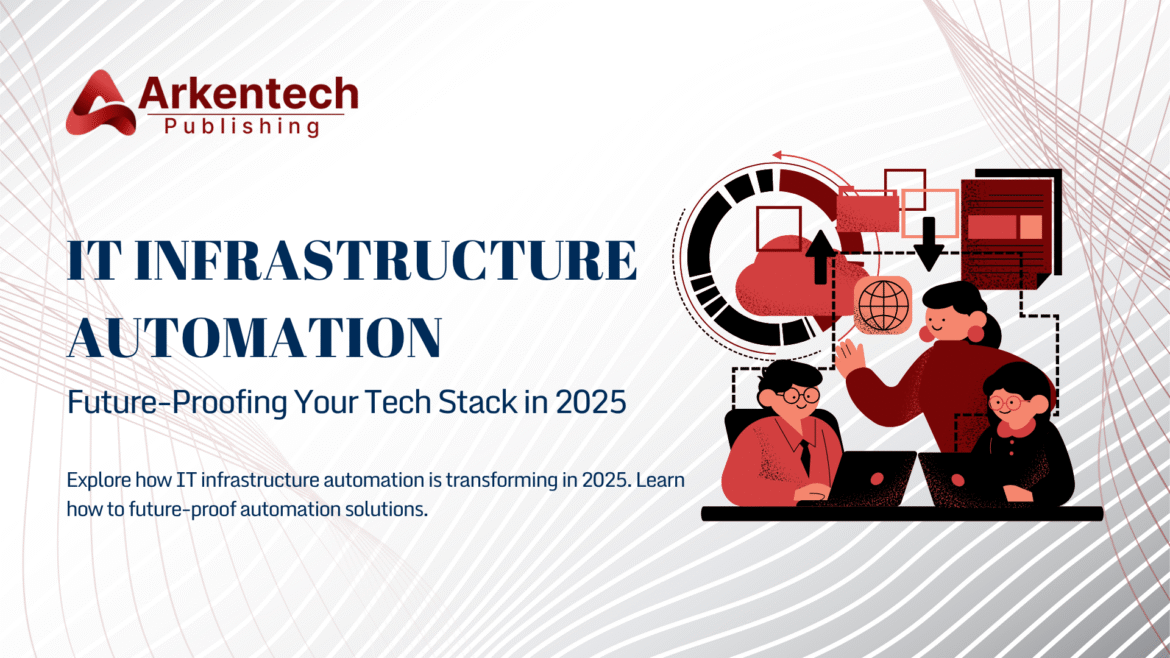Introduction
By 2025, this IT Infrastructure Automation has only exceeded a function – this is a requirement. Since businesses have quickly run to remain competitive in the digital world, it is to IT Infrastructure Automation processes the key to agility, scalability and operational efficiency. Manual configurations and reactive support models are replaced with rapid intelligent automation tools that continuously manage the system, reduce human errors and adapt to performance.
In this blog, we will discover the importance of IT Infrastructure Automation, the benefits, 2025, and how to effectively secure your technology cuff in the future.
Why IT Infrastructure Automation Matters in 2025
With rapid adoption, hybrid to the IT environment, IT Infrastructure Automation and increasing the dangers of cyber security, the control of complex infrastructure is no longer durable now. Empower Automation Business:
- Reduce shutdown through proactive monitoring and self -healing systems.
- Scale operations quickly with zero-touch determination and configuration.
- Improve the safety currency with automated match controls and patch control.
- Increase team’s productivity by eliminating repeated tasks.
According to recent studies, more than 70% of companies plan to increase investments in IT infrastructure automation in 2025. This shift is not just about convenience – it’s about existence.
Key Benefits of IT Infrastructure Automation
Let’s dive deeper into how automation is revolutionizing IT management:
1. Speed and Efficiency
Automation enables rapid infrastructure distribution. Tools such as ANSAIL, TerraForm and Chefs allow the teams to spin the complex environment in minutes instead of hours.
2. Cost Reduction
By reducing manual work and the system’s downtime, the automation operations make the operations significantly cut. Predictive analysis and auto-premediation also help prevent expensive errors before you occu
3. Consistency and Reliability
Scripts and automation workflows ensure frequent system configurations, reduce misconceptions and make the environment more reliable.
4. Security and Compliance
Automation tools help to use a safety basis and monitor flow. Automatic update, backup and revision simply simplify compliance with standards such as ISO, HIPAA and GDPR.
5. Scalability and Agility
Infrastructure as Code (IaC) allows businesses to scale up or down seamlessly. Whether you’re adding new servers or migrating to the cloud, automation makes transitions smoother.
Emerging IT Infrastructure Automation Trends in 2025
1. AI-Powered Automation
AI is now integrated into many IT operation platforms. Future settled maintenance, intelligent resource allocation and autonomous decision -making take standard functions.
2. Low-Code/No-Code Automation Platforms
These platforms allow non-developers to automate features with simple drag-and-drop interfaces, which expand automation functions in departments.
3. Integration with DevOps Pipelines
The automation is deeply built into CI/CD pipelines, which enables fast and more reliable software delivery. Tools that are automated for equipment testing, distribution and monitoring such as Jenkins, Gitrab and Azure Devaps.
4. Edge Infrastructure Automation
With the emergence of IoT and Edge data processing, automation is expanded beyond data centers. It ensures the treatment of real-time and low-oppression services.
How to Future-Proof Your Tech Stack with Automation
To stay ahead in 2025, follow these strategies:
Adopt Infrastructure as Code (IaC)
IAC tools such as Terform and AWS CloudForms allow you to define, manage and distribute infrastructure through code, which ensures repetition and openness.
Leverage Cloud-Native Automation
Use automation features introduced by cloud platforms such as AWS Systems Manager, Google Cloud Periny Manager and Azure Azure Automation.
Invest in AIOps
Artificial intelligence for IT operations (AIOP) increases monitoring, execution of management and basic causal analysis using ML and Big Data
Prioritize Cybersecurity Automation
Use automatic FARTEACTION, event reaction and compliance audit to protect your infrastructure.
Upskill Your IT Team
Make sure IT employees have been trained in scripting, Devops practice and automation equipment to maximize the return from the automation investment.
Real-World Example: Automation in Action
A global e-commerce company automatically expanded the reaction from the incident using its server supply, patch administration and Ansail and Aiop’s tools. This reduced deployment of up to 80%, reduced shutdowns up to 60%and saved more than $ 1 million annually in operating costs.
Final Thoughts
By 2025, this infrastructure automation is no longer optional – it is the founder. Future evidence of your technological stack means embrace automation to create flexible, safe and scalable systems. With the right equipment, strategies and effective teams, your business can make it a competitive advantage from the cost center.
Organizations that delay automation risk fall back due to a slow response to disabilities, high operating costs and technical changes. On the other hand, early innovations can gain a significant advantage in productivity and customer satisfaction. It is now time to evaluate your current infrastructure and start the transition to the IT environment ready for the future, fully automated, future.

